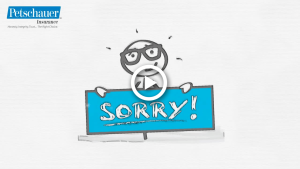Private Company Directors & Officers Liability Renewal Premiums
In speaking with the underwriting community about private company D&O renewal policies, they are unanimous in their assertion that there has been a significant deterioration in claim experience.
Historically, losses were the result of Employment Practices Liability claims, especially following the economic meltdown of 2008. Now that the worst is behind us, private company D&O claims have manifested the more traditional types of loss scenarios. As a result, employment practice claims are no longer a large factor in driving the market’s swings in pricing. However, make no mistake – pricing continues to be an issue.
One reason for this is that private company D&O policies are written to be much broader in terms of the coverage they afford than their public company counterparts. Under public company forms, the “entity” coverage is restricted to securities claims only. Under the private company forms, the “entity” coverage is actually written on an all risks basis. Therefore, claims scenarios are wide open and can even allege such wrongdoing as “false advertising, misleading promises” and the like. Such allegations aren’t covered under the public company form, so a public company policy would never entertain this type of claim to begin with.
Under a policy for private companies, employees are covered and by ’employees’ we mean not just the directors and officers who might also be employees, but employees in any capacity who work for the company. Many such lawsuits don’t even bother to mention or name the directors or officers of the firm. However, such claims are covered under private company D&O Liability policy forms.
In addition, under private company policies, coverage is usually written on a “duty to defend” basis where an insurer is obligated to defend its insured against third-party claims. All an insured needs to do is establish that there is a ‘potential’ for coverage under the policy in order to give rise to this insurer’s obligation. The reason for this is because the insurance policy is a contractual obligation which is undertaken by the insurer. Thus the insurer has taken on responsibility to pay for all legal defense costs and assume a defense for its insured. In addition, the insurer may owe a duty to defend even in cases where ultimately no damages are awarded. Not only must the insurer assume control of the claim defense process, but they must also select counsel as well as pay all the legal bills. This is diametrically opposed to public company D&O Liability policies which are written on a non-duty to defend basis. Non-duty to defend (or duty to pay) policies require only that the insurer reimburse the insured for funds expended by the insured in defending a claim. These are termed “duty to pay” policies.
The take away here is that private companies should be prepared to pay more on its next renewal and so considering a higher deductible or lower limits might be an answer to keeping the cost within budget.
Karen Skoler









